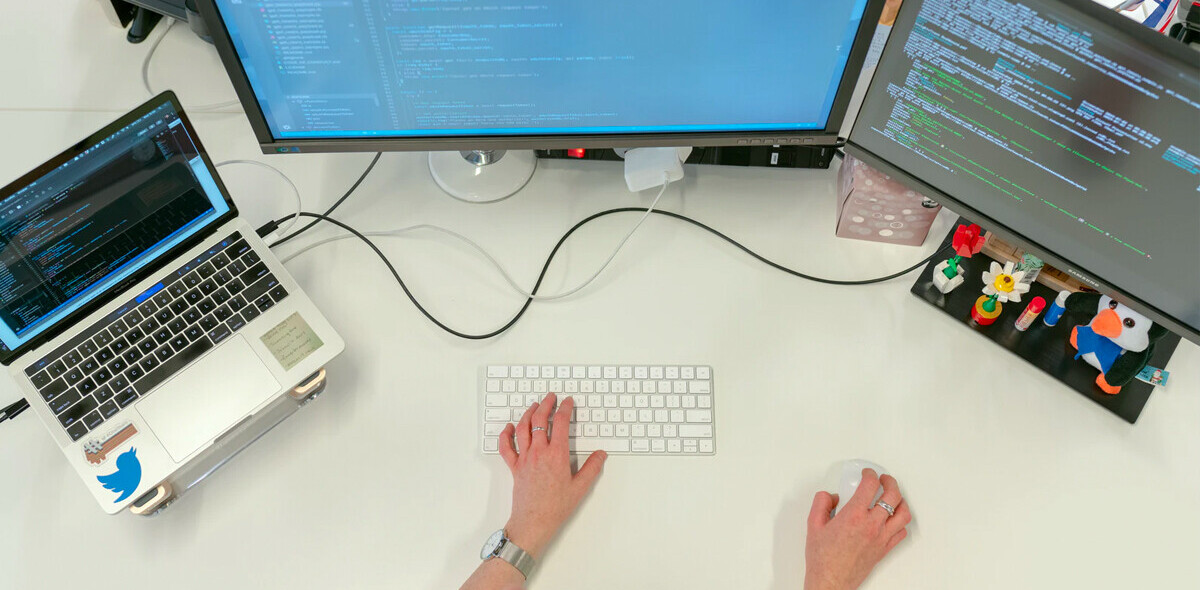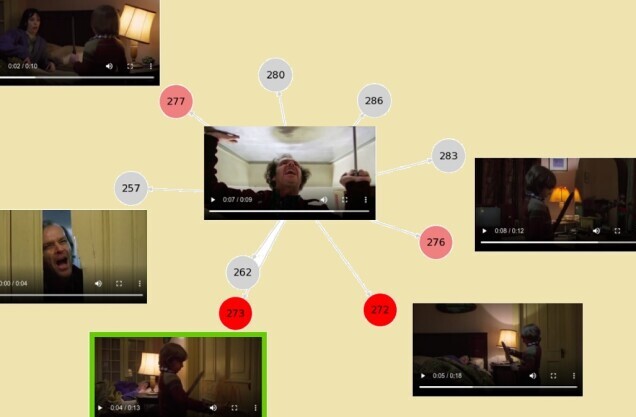
As one of the most ancient tenets of human societies, money and finance have been constantly evolving with advances in technology and science. As technology continues to take leaps and bounds and permeates every aspect of life, we can expect banking and finance to change.
So, how will technology transform financial services in the next few years? We asked experts to share their perspectives, and here are five trends we think are worth watching.
Natural language processing
The past decade has seen tremendous advances in natural language processing, the field of artificial intelligence that extracts meaning and context from spoken and written language. Natural Language Processing (NLP) provides an unprecedented opportunity to obtain value from Word and PDF documents, emails, chat logs, social media posts, and the vast amounts of unstructured data that constitute much of the web.
In the world of finance, we’re already seeing the benefits of natural language processing in banking chatbots, legal document scanning, and other applications. But the best is yet to come.
“Customers already interact with banks using unstructured data today (e.g. providing a scan of a passport, a salary slip or annual report for a loan application),” says Dennis de Reus, Head of Artificial Intelligence at ABN AMRO. “I expect we will see a lot more applications of AI within the existing processes. Looking further out, I think the role of external unstructured data will grow, for example, by taking into account recent news articles to prevent fraud or other criminal behavior by clients.”
“In the future, AI will support every customer interaction,” de Reus adds. “It will connect you to the best person, it will make personalized suggestions to ABN AMRO employees on the best answers for your question, it will suggest personalized/bespoke solutions, it will automatically summarize your conversation and send you the agreed actions, etc. When you call the bank, you’ll still speak to a human, but they’ll be supercharged through AI.”
As we see new leaps in NLP performance thanks to new AI technologies such as Transformers, BERT, and GPT-3, new pathways will open for innovation in banking.
“These are very interesting models that show great promise for future applications. Especially GPT-3’s recent performance is truly amazing. On the back of these developments we’ll see better AI-supported customer interactions,” de Reus says.
ABN AMRO is already using NLP-powered chatbots to provide better customer service. It is also using AI to help the customer support staff in finding answers in the company’s knowledge base and relevant information in previous exchanges with a customer. It would be interesting to see how future innovations in AI and NLP will help propel these efforts forward.
“As acceptance goes up, more clients will work with AI,” de Reus says. “For example, a person who wants to have a discussion on a mortgage can share their documents with an AI that will analyze them and will guide the client on the preparation and the process.”
Customer intelligence
The expansion of cheap computing and the ubiquity of internet access has created a vast and unique digital footprint of every person. We’re still at the beginning of a new era of computing, and we must figure out how to iron the kinks, including dealing with the security and privacy threats. But the increasingly connected and digitized world is opening the way for many new opportunities, including in banking and finance.
Thanks to the availability of data and advances in machine learning and analytics technologies, every customer will be able to benefit from a highly personalized experience that spans across their entire digital and physical lives.
“If you look at the role of data, analytics, and AI in banking, it’s about how do we help people in areas such as sustainable financing, mortgages, loans, and savings. AI is the catalyst: You can do what the bank already does but better and faster,” says de Reus. “Banks will use data and analytics to help business clients in a much broader sense. For instance, they won’t just finance your inventory, they’ll provide the tools to manage it, and the insights to optimize your business. They won’t just finance the solar panels on your roof. They’ll help you get optimal benefits from them by optimizing their operation and integrating with the right energy provider.”
De Reus also believes that the increased adoption of digital channels and the integration of financial services in other platforms and applications will create more data about customer interactions. “This will create new opportunities to serve customers in a more personal way, and make us more effective in detecting and preventing fraud,” he says.
Smart financial crime detection
Banks process a growing number of online transactions thanks to the increasing number of applications and technologies that provide access to financial services. Fraud and financial crime constitute a very small percentage of these transactions, but they still present a challenge considering the sheer amount of money being transferred online every minute.
As banks and financial institutions develop technologies to spot and block malicious transactions, criminals are also evolving their methods and finding new ways to carry out their evil deeds. In this regard, the vast availability of data and advanced AI algorithms to peruse them provides a unique opportunity to reduce fraud and false positives, with the aim of working towards a healthier financial system.
“Every transaction is a set of data that, when extracted and analyzed, can provide unparalleled insights into areas such money laundering, terrorist financing, and tax evasion,” says Sebastiaan Greveling, a Detecting Financial Crime Data Analyst at ABN AMRO. “This is only possible using a data-driven approach. This enables us to find the currently unknown patterns in the data that relate to suspicious activities such that these patterns can be implemented in the transaction monitoring.”
One of the current pain points in financial data analysis is that clients can have accounts at multiple banks. But each bank however only has access to its own data stores. A great initiative and addition to the current transaction monitoring is Transaction Monitoring Netherlands (TMNL), a coalition between different banks in the Netherlands to augment the fight against financial crime.
“This is a collaboration between ABN AMRO, ING, Rabobank, Triodos Bank, and de Volksbank that combine their forces to identify unusual patterns in payments traffic that individual banks cannot identify,” Greveling says. “Doing all of this embodies one of the bank’s priorities: the prevention of money laundering, terrorist financing, and corruption.”
As banks and financial services find new ways to share, cooperate, and innovate, we can expect new synergies to appear in the fight against financial crime.
Application programming interfaces (API)
Application programming interfaces have existed for a long time. But in recent years, they have grown from internal tools inside companies to crucial building blocks that connect organizations and facilitate the development of new applications and platforms There are now companies whose entire business model is providing microservices through APIs.
There now exist APIs for everything, from image recognition to voice over internet protocol (VoIP), and yes, banking. The accessibility and integration of financial APIs create opportunities for entirely new ecosystems of applications and interoperability between online services.
“Banks are opening up application programming interfaces and developer portals,” says Koen Adolfs, Lead Product Owner Open Banking and API Evangelist at ABN AMRO. Adolfs has helped in the development of ABN AMRO API infrastructure. “On the ABN AMRO Developer Portal, we provide Business Account Insight, Business Account Notification, FX Trade, and Tikkie (Payment Request) as API Products to actively innovate together with fintech and customers. In addition, we are constantly sharing how we are building new experiences and encourage the developer community to join and build their own applications.”
As one of the first API products of ABN AMRO, Tikkie is an interesting case study that shows how banks can leverage their capabilities in digital ecosystems. For consumers, Tikkie provides a convenient way to send payment requests to friends and family. Businesses, on the other hand, can use Tikkie to send payment requests for their services. This can be done via an app, portal, and API. The API has been proven to be very useful to ABN AMRO’s corporate customers as it allows them to create automated payment requests, receive payments faster, and get real-time insights along the way.
Since ABN AMRO launched the Tikkie API in November 2017, developers have used it in many innovative ways, and it has provided solutions to many business propositions. “As a result, Tikkie has provided an opportunity for ABN AMRO to better understand the dynamics of payment APIs as well as educate developers and other banks on the benefits of the API ecosystem,” Adolfs says.
With banking APIs and open banking being new, Adolfs believes we will see the maturity of the space in the coming years, which will pave the way for new opportunities and applications that will ease payments and the exchange of value for everyone from consumers to businesses.
“Learning is going to be the key theme for 2020 for all parties. Only when all parties learn, valuable propositions will be developed that the customers like,” he says.
Blockchain and cryptocurrencies
Blockchain and cryptocurrencies have taken some bad rap in the past few years, due to the volatility of prices, exit scams, and all kinds of bad practices by parties with the intention to make money off the early hype and excitement surrounding blockchain. But the benefits of distributed ledgers, disintermediation, data ownership, and cryptography are undeniable, and although there will be bumps in the road, blockchain and cryptocurrencies will eventually carve their niche in the financial industry.
“For many today, the disintermediation of money provides resiliency in local geopolitical circumstances, as we see in places like Argentina,” says Peter Mauric, Head of Public Affairs at Parity Technologies. “As we have seen with some of the recent movement in the DeFi space, many of the financial mechanisms that exist in the centralized financial services industry are being implemented on decentralized networks like Ethereum and Polkadot, and we expect to see this trend continue. In many respects, it is the low-hanging fruit for our space and I would not be surprised if the burgeoning non-blockchain-based fintech space started to be absorbed by better, decentralized alternatives.”
Marshall Hayner, CEO and co-founder of Metal Pay, believes that over the next five years blockchain and distributed ledger technology will penetrate every area of digital banking and payments. “In particular in the areas of identity management, electronic funds transfer and decentralized finance (DeFi) lending and trading services are bound to change. With the shrinking of Federal interest rates, consumers and businesses will turn to more decentralized open models for predictable interest rates,” he says.
As blockchain expands, we can expect the gradual integration of traditional and blockchain-based banking systems. “Banking operations will begin to operate on distributed ledger technology with bridges to various open-source blockchains,” Hayner says. “We are already seeing this with various central banks of the world experimenting with this technology, most notably with the Chinese digital yuan.”
Mauric takes it one step further. “There will be a necessary blurring of the lines between traditional banking and blockchain, much like we will see a blurring of the lines between our physical reality and the AR and VR technologies changing how we see the space around us,” he says.
Technology is not the limitation
History has shown that the future is very hard to predict, and many things can happen that will change the equations and dynamics that govern the financial industry. But at the end of the day, the people who innovate will be the key to what unfolds in the next years.
“In general — and not only in banking — technology is not the limitation. The people are the limitation,” says Edwin van Bommel, Chief Innovation Officer at ABN AMRO. “As we saw during the COVID-19 pandemic, everyone was super-aligned, super-focused, and this is why we were able to kick out so many innovations in such a short time. If we would be able to keep half of that additional mindset, it would already be enough to see major positive changes in the industry.”
Want to learn more about the future of finance? Dennis de Reus, Robin de Jongh, Koen Adolfs, Marshall Hayner, and Edwin van Bommel will all be speaking at TNW2020 this week, on October 1 and 2. Check out the lineup, and register here!
Get the TNW newsletter
Get the most important tech news in your inbox each week.
Whatever your specialism, with ABN AMRO your talent and creativity will help build the bank of the future. Learn more about their exciting tech job opportunities.






